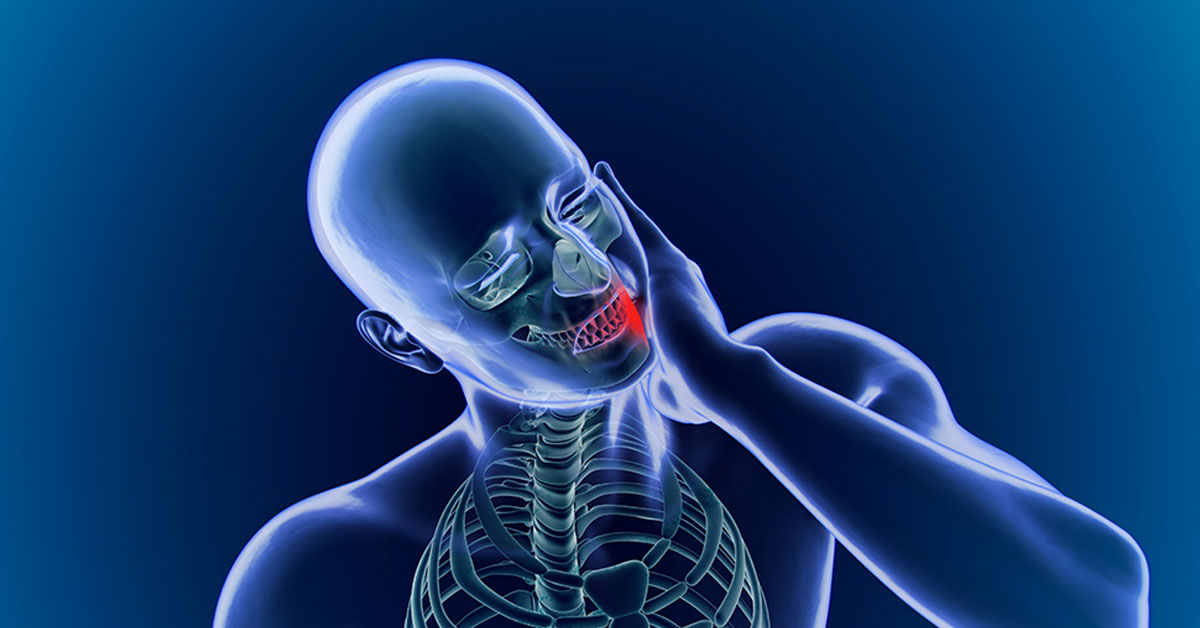Trigeminal Neuralgia: intense pain in check or jaw, lasting seconds to minutes. Pain varies from ache to shock-like.

What is Trigeminal Neuralgia?
Trigeminal neuralgia is an intense, constant pain condition that causes sudden, sporadic, extreme, burning or shocking pain in the face. Some patients may experience tingling, numbness and constant aching or burning before an episode of trigeminal neuralgia. It is usually felt on one side of the cheek or jaw. The pain lasts from a few seconds to a few minutes. The frequency of these pain episodes can be days, weeks, months, or even years.
The trigeminal nerve is the 5th of twelve pairs of cranial nerves in the head. This nerve provides feeling and sensation to the face. One leg of the pair runs to each side of the head. Each leg of the nerve divides into three distinct branches, which control sensations throughout the face.
What causes Trigeminal Neuralgia?
Trigeminal neuralgia is caused when the trigeminal nerve is disturbed or irritated. One cause of irritation to the nerve can be its contact with an artery or vein. The artery or vein may place pressure on the trigeminal nerve as it enters or leaves the brain. This pressure can cause the trigeminal nerve to misfire.
Another cause may be pressure placed on the nerve due to the presence of a tumor. The tumor can damage the myelin sheaths of the nerve. Finally, multiple sclerosis can also irritate the trigeminal nerve. The development of trigeminal neuralgia at a young age may be an indication of multiple sclerosis.
Symptoms and Diagnosis:
The most common symptom of trigeminal neuralgia is a very painful, sharp, electric-like pain in the facial areas. The pain usually occurs spontaneously out of nowhere. It's usually felt along the upper or lower jaw.
This pain can either be classic pain or atypical pain. Classic pain has definite starting and ending periods. Classic pain is intense, excruciating and shock-like, and lasts for a defined period of time that's generally a few seconds to several minutes. Atypical pain is usually in the form of a continuous, burning sensation that does not have definite starting and ending periods.
Usually, the diagnosis of trigeminal neuralgia is based on the patient's description of symptoms. Magnetic resonance imaging, or MRI, can help to detect if a tumor or multiple sclerosis is disturbing or irritating the trigeminal nerve.
There are no specific tests to definitively determine if the trigeminal nerve is the source of the pain. However, there are diagnostic tests to help to rule out other causes of the facial pain.
How is Trigeminal Neuralgia treated?
Medication: Your doctor may prescribe medicine for the treatment of trigeminal neuralgia. These may include anti-seizure drugs such as Carbamazepine, pregabalin, phenytoin, muscle relaxants such as baclofen and clonazepam, or tricyclic antidepressants such as amitriptyline and nortriptyline.
Surgery: Surgery can be used to relieve the pressure on the trigeminal nerve. Surgery may be necessary to remove the tumor if it is putting pressure on the trigeminal nerve. Depending on conditions, surgery may involve cutting or destroying the part of the nerve.
Radiation therapy: Stereotactic radiosurgery, such as Gamma Knife, Cyberknife, or LINAC, focuses a highly concentrated dose of radiation on a small, precise area of the trigeminal nerve root. As a result of radiation, a lesion is formed on the nerve. This lesion can then interrupt the transmission of pain signals to the brain.
